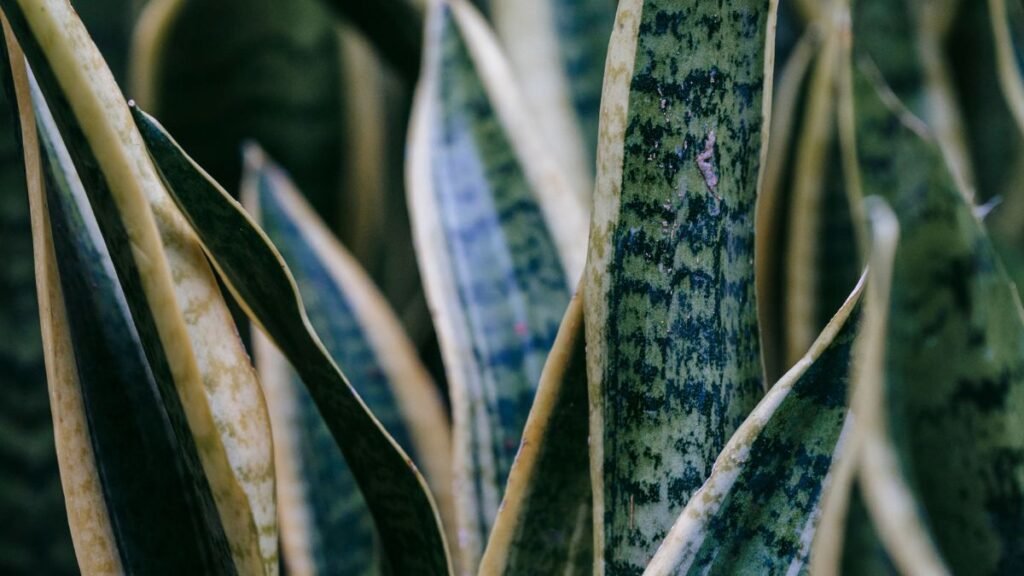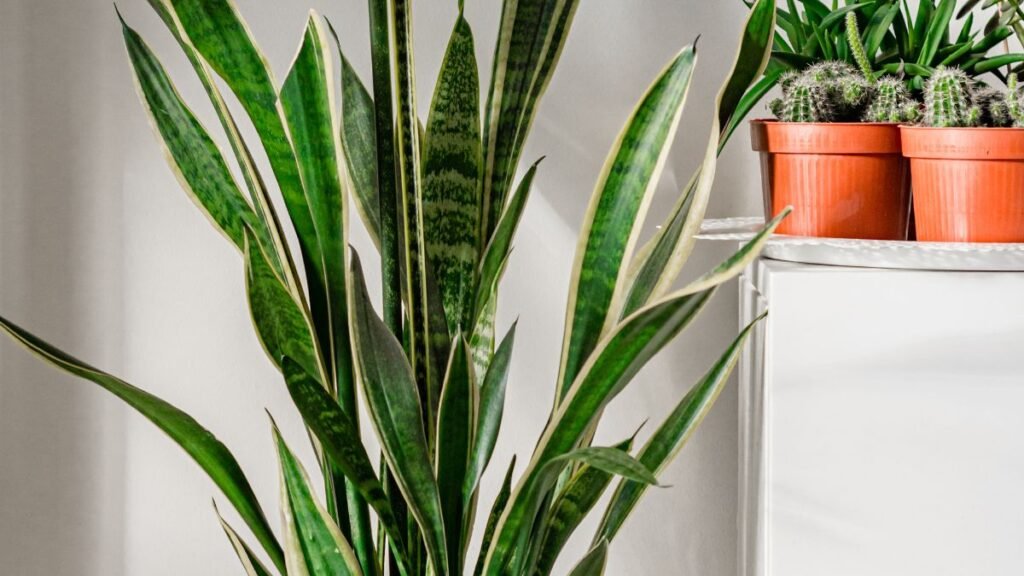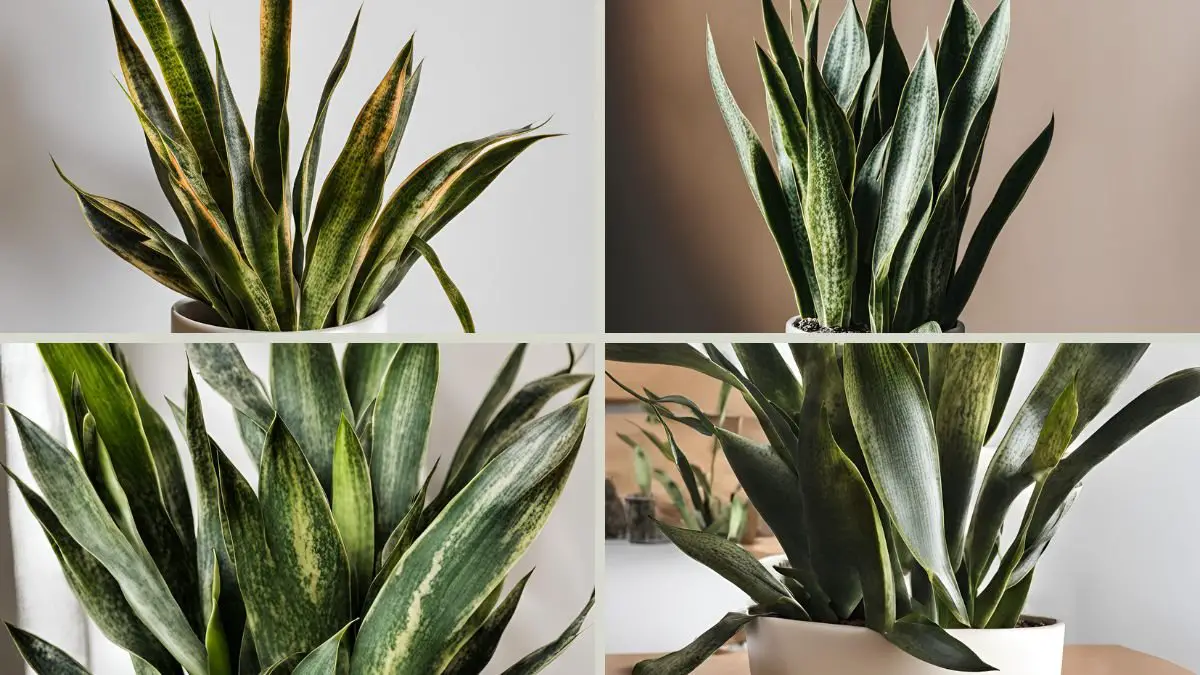Did you know that overwatering is one of the leading causes of snake plant demise, especially for succulents? Recognizing the signs of a struggling snake plant, succulents with spots and dead leaves on the foliage, can help you intervene before it's too late. Keep an eye out for yellowing leaves, mushy stems, spots, and a lack of new growth to determine if your snake plant is in trouble due to fungal disease.
Key Takeaways
- Recognize the Signs: Look for yellowing leaves, mushy stems, or drooping appearance to identify a dying snake plant early.
- Address Root Causes: Understand that overwatering, inadequate light, extreme temperatures, pests, and diseases can contribute to your snake plant's decline.
- Watch for Overwatering: Be wary of soggy soil, yellow leaves, or foul odor as signs of overwatering, which can harm your snake plant.
- Consider Light and temperature: Ensure your snake plant receives adequate light and is kept in a suitable temperature range for optimal health.
- Combat Pests and Diseases: Monitor for pests like spider mites and diseases like fungal infections that can harm your snake plant.
- Treat Root Rot: If root rot is suspected, trim affected roots, repot in fresh soil, and adjust watering habits to save your snake plant.
Recognizing a Dying Snake Plant

Yellow and Brown Leaves
Yellow leaves on your snake plant can signal over-watering, a common issue affecting its health due to the soil or pot. Over-watering leads to root rot, causing the leaves to turn yellow. On the other hand, brown leaves are often a result of sunburn due to excessive exposure to direct sunlight. Monitoring any color changes in the leaves is crucial to assess the overall health of your plant.
Curling and Drooping
Drooping leaves indicate dehydration in your snake plant, highlighting the need to water the soil in its pot for immediate action. Address this by adjusting your watering schedule promptly. If you notice curling leaves, it could be a sign of temperature stress. Ensure that your plant is not exposed to extreme temperatures and maintain a stable environment by checking the soil and water to prevent further leaf curling.
White Spots and Mushiness
Inspect your snake plant for white spots as they may indicate the presence of pests like spider mites in the soil. Prompt treatment is necessary to prevent these pests from causing extensive damage to your plant. Furthermore, mushy areas on the plant suggest root rot, a condition that requires immediate attention. Regularly check for any signs of mushiness and take corrective measures promptly.
Leggy Growth
To encourage healthier development in your snake plants, water and soil trim any leggy growth that may hinder its growth potential. Providing adequate sunlight is essential in preventing leggy growth patterns. If leggy growth persists despite sufficient sunlight, consider supporting the plant with stakes to promote better posture and overall health.
Root Causes of Distress
Water Issues
Snake plants can suffer from stress due to soil and water problems. To maintain plant health, follow a consistent watering schedule. Adjust the watering frequency based on soil dryness levels. It's crucial to use well-draining soil to prevent water-related issues.
Light and Temperature
Proper light exposure is essential to avoid sunburn in snake plants. Monitor temperature fluctuations carefully to ensure optimal growth conditions. Adjust light and temperature levels accordingly for the plant's well-being.
Soil and Pot Size
Selecting the right pot size is crucial for a snake plant's root system. Choose a pot that matches the plant's growth needs. Use well-draining soil to prevent root rot, which can cause distress to the plant when overwatered. If the current pot is too small or causing issues with water, soil, consider repotting the plant.
Pests and Diseases
Pests like mealybugs and thrips can harm snake plants, leading to distress. Promptly identify common pests infesting your plant. Treat pest infestations immediately to prevent further damage. Implement preventive measures such as regular inspections to avoid future pest issues.
Overwatering and Its Signs

When it comes to overwatering your snake plant, it's crucial to be mindful of the signs that indicate potential soil issues. One significant indicator of overwatering is mushy roots, which can lead to root rot if left unaddressed. By checking for mushy roots, you can take proactive steps to save your plant.
- Check for mushy roots as a sign of root rot.
- Trim affected roots to promote plant recovery.
- Repot the plant in fresh soil to prevent further root issues.
Another common sign of overwatering is wilting stems, which can signal distress in your snake plant. Addressing wilting stems promptly is essential to prevent further decline in the plant's health. By adjusting watering practices and ensuring proper temperature conditions, you can help revive wilting stems and improve overall plant vitality.
- Address wilting stems promptly to prevent plant decline.
- Adjust watering and temperature to revive wilting stems.
- Monitor stem health closely for improvements.
Light, Temperature, and Plant Health
Too Much Sun
Snake plants can suffer from too much sun exposure, leading to burnt leaves. To remedy this, relocate the plant to a spot with less direct sunlight. Shielding the plant from excessive sun can prevent further damage. Gradually adjusting light levels helps avoid shock.
Extreme Temperatures
Protect your snake plant from extreme cold or heat, as these conditions can harm its health. Maintaining a stable temperature environment is crucial for the well-being of the plant. During temperature extremes, consider using insulation or shading to provide protection.
Battling Pests and Diseases
Pests Invasion
Inspect your snake plant regularly for any mealybugs or other pests that may invade. These tiny insects can quickly multiply and harm the plant's health. Treat any pest infestations promptly to prevent further damage.
To combat mealybugs or other pests, use appropriate methods such as insecticidal soap or neem oil. These natural remedies can effectively eliminate pests without harming the plant. Implementing natural pest control measures is essential to safeguard your snake plant from future invasions.
Fungal Threats
Keep an eye out for any mold or fungus on the leaves, which are common signs of fungal threats. Fungi thrive in humid conditions, so it's crucial to improve air circulation around the plant by placing it in a well-ventilated area. Address any fungal issues promptly to prevent them from spreading to other parts of the plant.
Preventing fungal growth is key to maintaining your snake plant's health. By ensuring proper air circulation and avoiding overwatering, you can create an environment that is less conducive to fungal development. Prompt treatment of any fungal problems will help protect your plant from serious damage.
Root Rot Identification and Cure
Root rot in snake plants can be detrimental if not identified and treated promptly. Here's how to spot root rot and steps for revival:
Spotting Root Rot
Yellowing leaves are an early indication of root rot in snake plants. This discoloration starts at the bottom of the plant and progresses upwards.
Foul odors emanating from the soil can also signal root rot. The roots may appear mushy and discolored, indicating a severe issue.
Addressing root rot promptly is crucial to prevent further damage to the plant. Act quickly upon noticing these signs to save your snake plant.
Steps for Revival
To revive a snake plant suffering from root rot, start by unearthing the plant carefully to inspect its roots thoroughly.
Trim any affected roots using sterile tools to prevent the spread of infection. Repot the plant in fresh, well-draining soil to promote recovery.
After repotting, monitor the snake plant closely for any signs of improvement, such as new growth or healthier-looking leaves.
Reviving Your Snake Plant
Wise Watering
Snake plants thrive on neglect, so water them sparingly to avoid root rot. Adjust watering based on the plant's needs and use a moisture meter for accurate measurements.
Proper Light and Warmth
Ensure your snake plant gets enough light for healthy growth. Consistent temperatures prevent stress, so adjust light exposure and warmth levels accordingly.
Pest Control
Protect your plant from pests by implementing control measures. Natural remedies can effectively deter pests, but regular monitoring is crucial.
Root Care
Regularly inspect the roots for damage and trim any affected areas to promote new growth. Repotting in fresh soil rejuvenates root health.
Closing Thoughts
After learning to recognize the signs of a dying snake plant, understanding the root causes of distress, and discovering ways to revive your beloved green companion, you are now equipped with the knowledge and tools to ensure its health and well-being. Remember, overwatering is a common culprit, so monitor your watering habits closely. Ensure your snake plant receives adequate light and maintains an ideal temperature. Keep an eye out for pests and diseases, promptly addressing any issues that arise. By implementing these practices, you can help your snake plant thrive and flourish.
Take proactive steps to care for your snake plant regularly. Share your newfound knowledge with fellow plant enthusiasts, spreading the word on proper snake plant care. Together, we can create a community dedicated to nurturing healthy and vibrant indoor gardens.
Frequently Asked Questions
How can I tell if my snake plant is dying?
If your snake plant is dying, you may notice yellowing or mushy leaves, wilting, or a foul smell. Check the roots for signs of rot. Act promptly to save your plant.
What are the common causes of distress in snake plants?
Common causes of distress in snake plants include overwatering, inadequate light exposure, temperature extremes, pests, diseases, and root rot. Address these issues promptly to ensure your plant's health.
How do I identify overwatering in my snake plant?
Overwatering signs in snake plants include yellowing leaves, soft and mushy stems, and a musty odor. Ensure proper drainage and watering schedule to prevent overwatering-related issues.
What are the ideal light and temperature conditions for a healthy snake plant?
Snake plants thrive in indirect sunlight and temperatures between 60-85°F (15-29°C). Avoid exposing them to direct sunlight for extended periods and protect them from drafts or extreme temperature fluctuations.
How can I revive a dying snake plant?
To revive a dying snake plant, assess its condition by checking roots for rot, adjusting watering habits, providing adequate light, addressing pest issues, and repotting if necessary. Trim off damaged parts and follow care guidelines to encourage recovery.
Image Source: Paid image from CANVA


